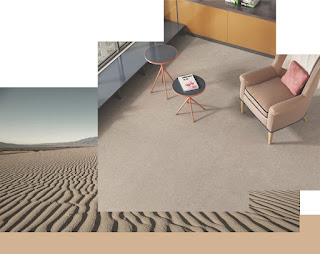The Surprising Reason Indian Ceramic Factories Are Beating International Brands!
For decades, the global ceramic market was largely dominated by European giants, primarily from Italy and Spain. Their heritage of design and craftsmanship set the gold standard. However, the last decade has seen a dramatic shift, with ceramic factory in India—particularly those clustered in Gujarat's Morbi region—emerging as formidable global powerhouses. The surprising reason behind this triumph is not a single factor, but a perfectly calibrated blend of competitive pricing, advanced technology, and strategic logistics.
The Unbeatable Value Proposition: Cost Efficiency Meets Quality
The most significant competitive edge for branded tiles in India is their remarkable value proposition. Indian manufacturers have mastered the art of producing world-class quality at significantly lower costs than their international rivals.
Affordable Production Ecosystem: The localized availability of key raw materials like clay, feldspar, and quartz, coupled with lower energy and skilled labor costs, forms the foundation of this cost advantage.
Scale and Efficiency: Ceramic hubs like Morbi are massive industrial clusters, allowing for efficient, large-scale production. This volume capability lowers the per-unit cost substantially, making Indian tiles highly attractive to global importers seeking high-quality, budget-friendly options. This strategic efficiency allows top players to offer products that rival the best of European design without the hefty price tag.
Technological Leapfrogging and Design Agility
It's a common misconception that low cost equals low quality. In fact, many of the best tile brands in India, such as Kajaria, Somany, and Asian Granito, have heavily invested in cutting-edge manufacturing technology, often matching or exceeding international standards.
Digital Printing Revolution: The widespread adoption of high-definition digital inkjet printing technology allows Indian factories to replicate the intricate, realistic textures of natural stone, wood, and marble with stunning accuracy. This ensures their products are always aligned with the latest global design trends, offering an extensive, diverse catalogue that foreign brands often take longer to develop.
Innovation in Product Range: Indian manufacturers have been quick to meet modern demands with specialized products, including large-format slabs, anti-skid tiles (like Somany's Slip Shield), and high-durability vitrified tiles, ensuring their relevance across residential and large-scale commercial projects worldwide.
A Strategic Edge in Global Logistics
Beyond the factory floor, a strong export infrastructure has cemented India's position as the world's second-largest tile exporter.
Geographic and Logistical Advantage: The proximity of major manufacturing clusters to key ports like Mundra and Kandla offers a strategic advantage. This allows for faster turnaround times and more cost-effective shipping to critical markets across the Middle East, Europe, and North America.
Supply Chain Reliability: In a post-pandemic world where supply chain stability is paramount, Indian ceramic factories have built a reputation for reliability and consistent, high-volume output. This stability is a key factor for international architects and builders looking to diversify their sourcing away from traditional manufacturing centres.
In conclusion, the success of the ceramic factory in India is no accident. It’s a compelling case study of industrial modernization where a favourable cost structure has been successfully paired with significant investment in advanced technology and smart logistics. By offering a blend of superior quality, immense design variety, and an unbeatable price point, Indian manufacturers are not just competing; they are setting the new benchmark for the global ceramics industry.


Comments
Post a Comment